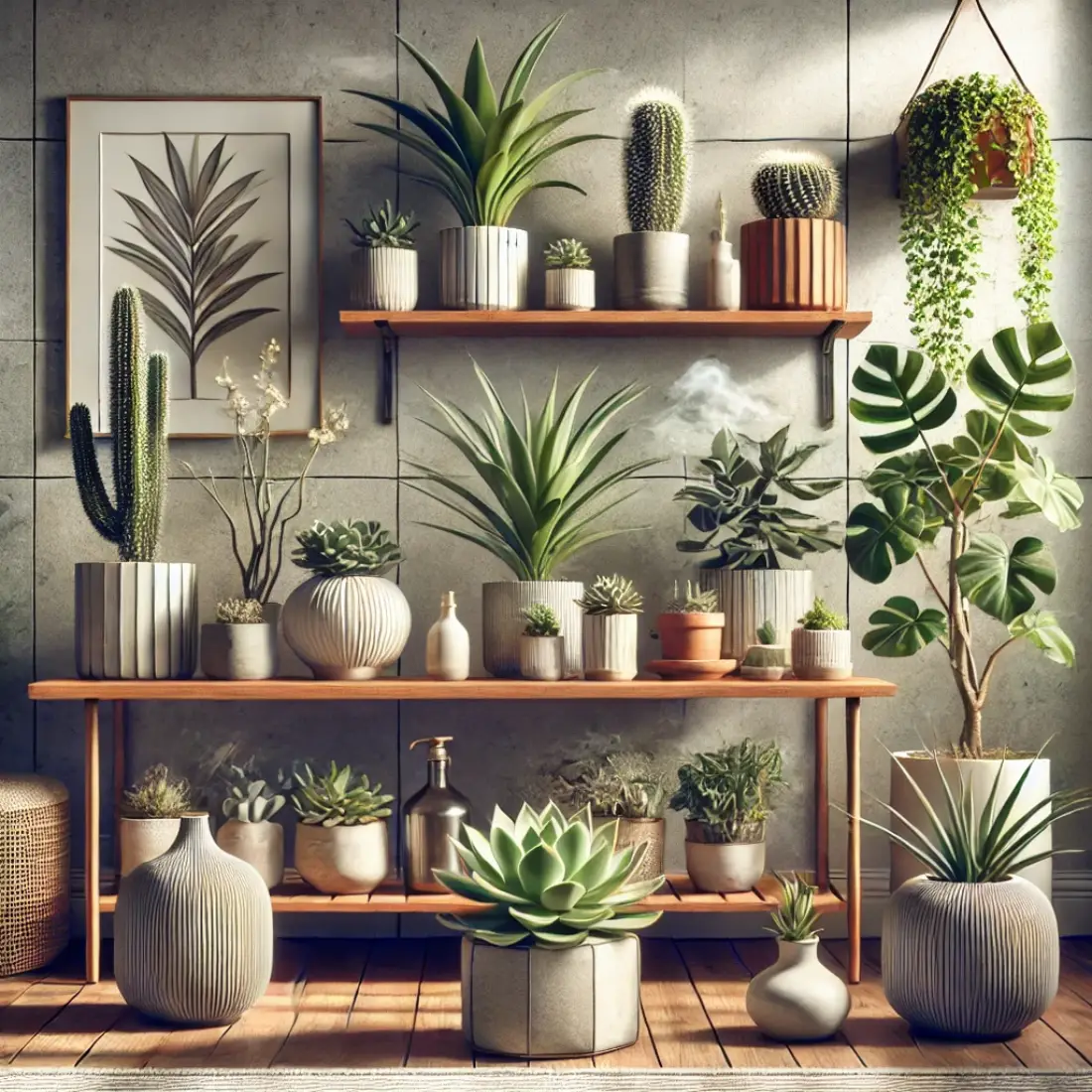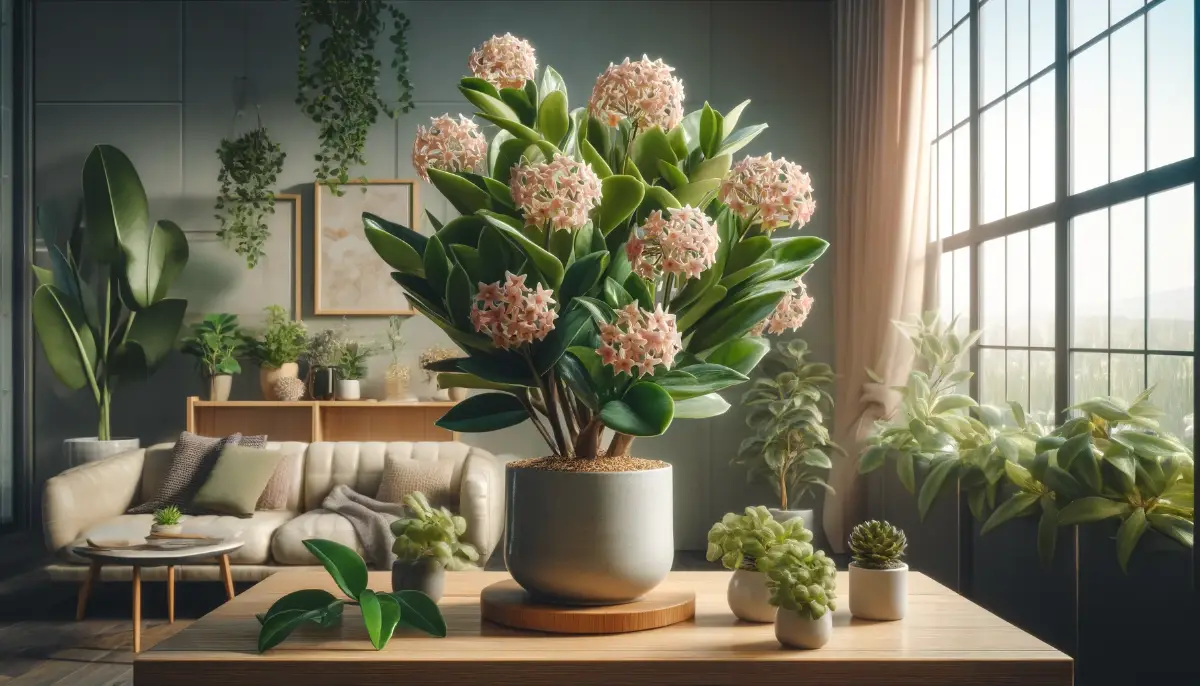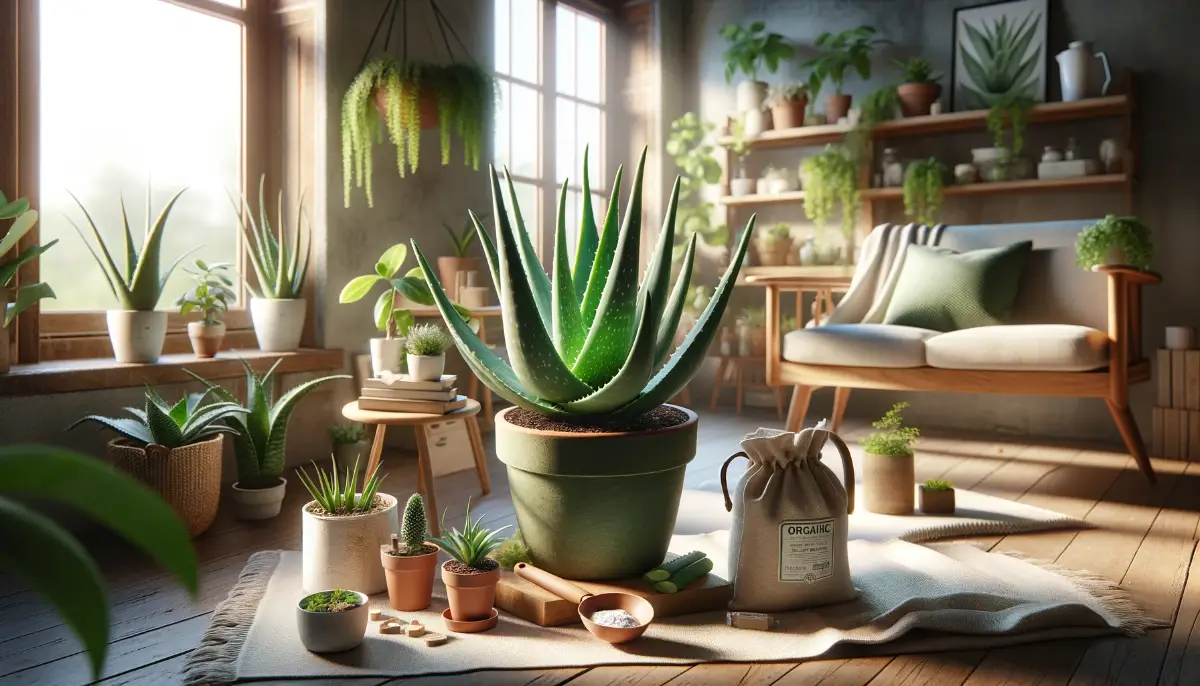Fragrant succulents and cacti are a unique and delightful addition to any home. These plants offer the perfect combination of visual appeal and natural fragrance, creating a soothing and inviting atmosphere. Unlike traditional indoor plants, fragrant succulents and cacti bring a touch of the exotic with their distinctive scents and striking appearances.
Whether you’re a seasoned plant enthusiast or a beginner, these aromatic plants are relatively easy to care for and can thrive in various indoor environments. From the subtle scent of Aloe Vera to the sweet aroma of Hoya, these plants will not only beautify your space but also fill it with delightful natural perfumes.
1. Fragrant Stapelia (Carrion Flower)
The Fragrant Stapelia, commonly known as the Carrion Flower, is a fascinating succulent that captivates with its unique scent and striking appearance. Despite its somewhat unusual nickname, the Stapelia’s scent, resembling that of rotting meat, is not as off-putting as it sounds. In fact, this fragrance serves an important ecological function, attracting pollinators like flies.
The Stapelia features star-shaped flowers that can grow up to 10 inches in diameter. These flowers are often adorned with intricate patterns and vibrant colors, making them a stunning addition to any succulent collection. The plant itself is composed of fleshy, green stems that grow in a clumping habit, adding a touch of greenery to your home.
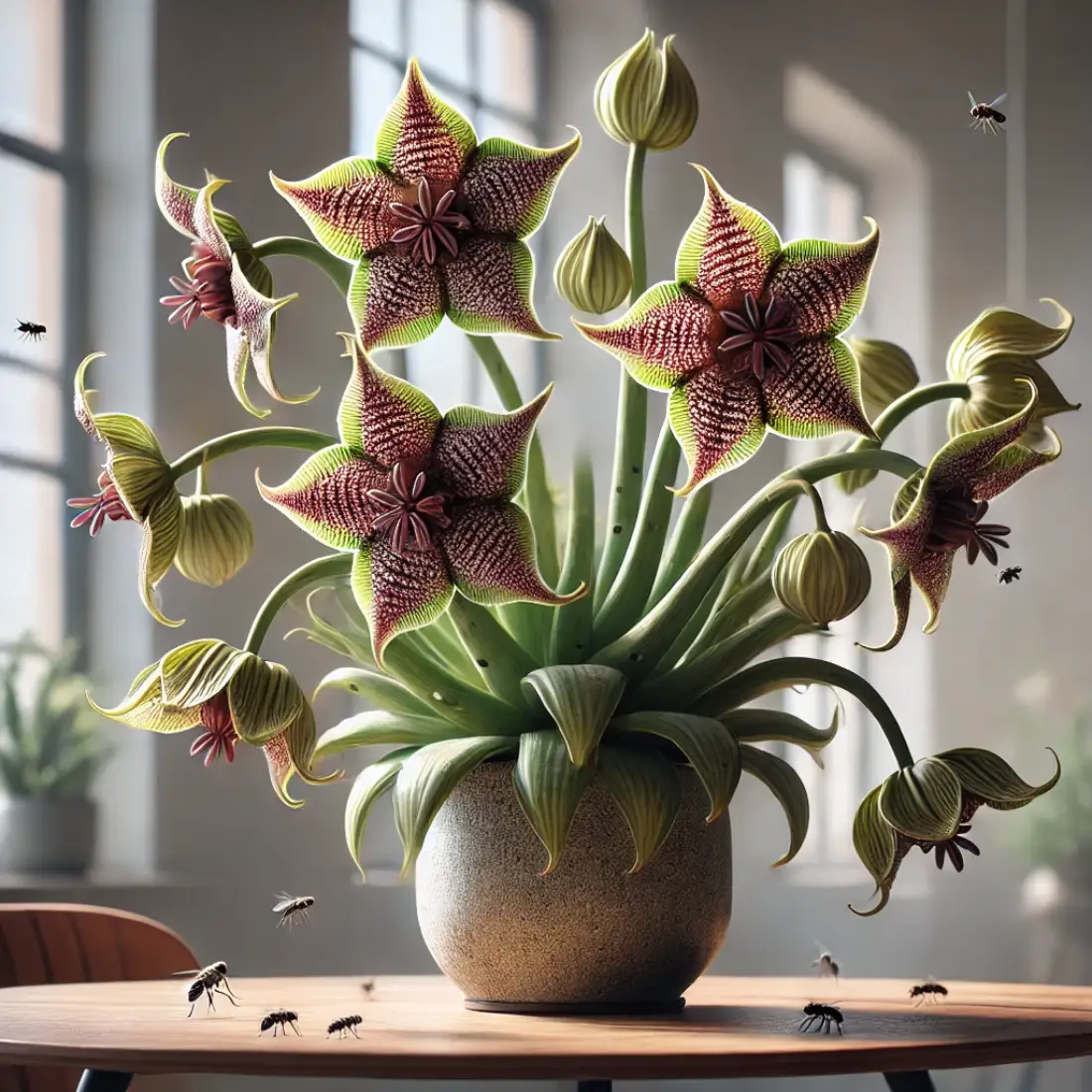
Caring for the Fragrant Stapelia is relatively straightforward. It thrives in bright, indirect light and prefers well-draining soil. Water the plant sparingly, allowing the soil to dry out completely between waterings to prevent root rot. During the growing season, a monthly feeding with a balanced fertilizer can promote healthy growth and flowering.
This unique succulent is perfect for those looking to add a touch of the extraordinary to their indoor garden. Its combination of striking flowers and distinctive scent makes the Fragrant Stapelia a conversation starter and a fascinating plant to observe.
2. Cuban Oregano (Plectranthus amboinicus)
Cuban Oregano (Plectranthus amboinicus), also known as Mexican Mint or Spanish Thyme, is a versatile and aromatic succulent that can add both fragrance and flavor to your home. This hardy plant is known for its thick, fuzzy leaves that emit a strong, pleasant aroma reminiscent of traditional oregano, making it a popular choice for culinary uses as well.
The leaves of Cuban Oregano are not only fragrant but also edible, often used in cooking to enhance the flavor of various dishes. This makes the plant a dual-purpose addition to your home, serving as both a decorative and a functional herb. The plant itself grows in a bushy, trailing manner, making it an excellent choice for hanging baskets or as a ground cover in container gardens.
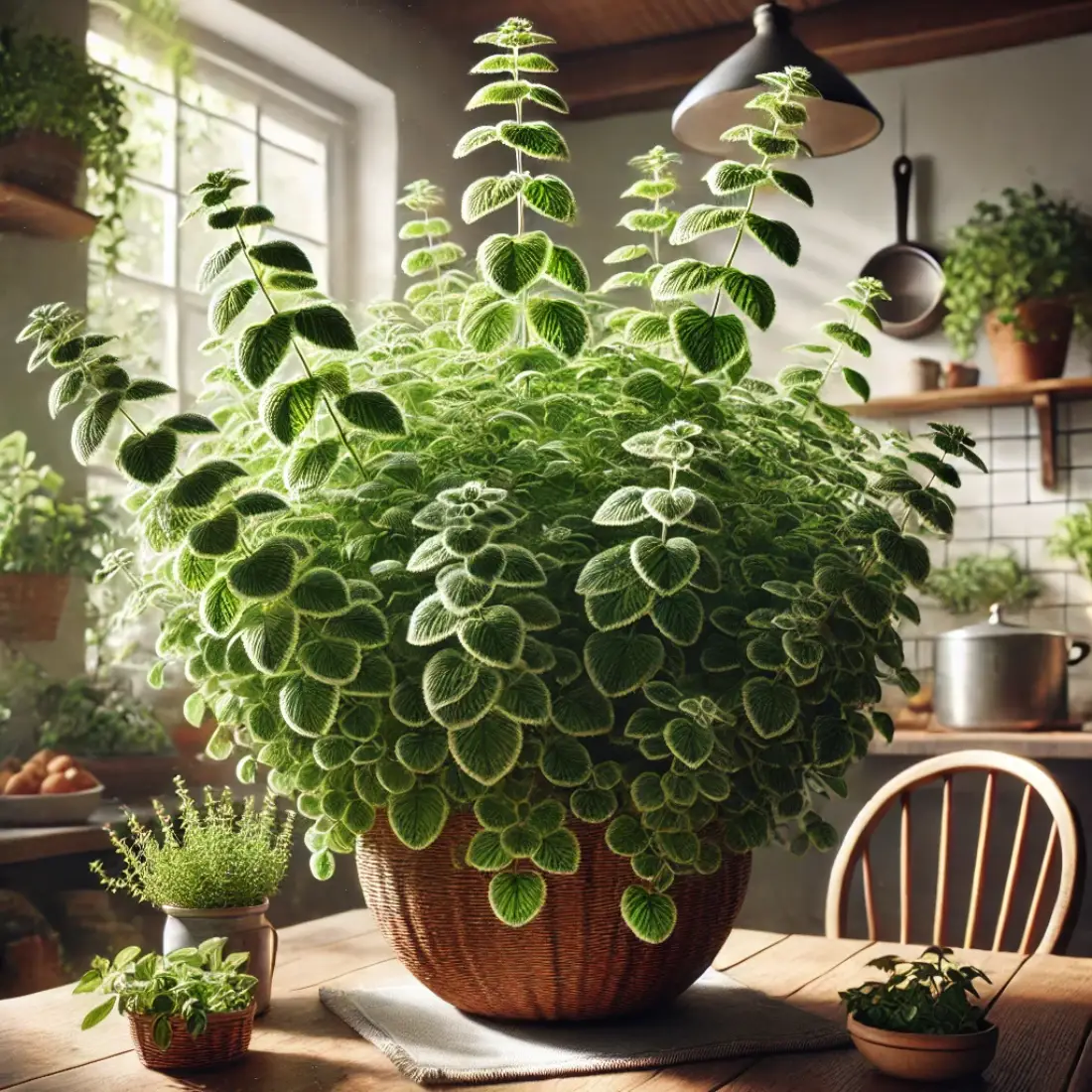
Caring for Cuban Oregano is easy, even for novice gardeners. It thrives in bright, indirect light but can also tolerate partial shade. The plant prefers well-draining soil and should be watered moderately, allowing the top layer of soil to dry out between waterings. Overwatering should be avoided to prevent root rot. Additionally, Cuban Oregano can be propagated easily from stem cuttings, making it simple to expand your collection or share with friends.
Overall, Cuban Oregano is a delightful and fragrant addition to any indoor garden, offering the benefits of a natural air freshener and a handy culinary herb.
3. Hoya (Wax Plant)
The Hoya, commonly known as the Wax Plant, is a beloved fragrant succulent renowned for its sweet-smelling flowers and striking appearance. This plant gets its nickname from the waxy texture of its star-shaped flowers and glossy green leaves. Hoyas are particularly valued for their clusters of fragrant blooms, which can fill a room with a delightful scent, especially in the evening.
There are many species of Hoya, each offering unique flower colors and patterns. The most popular variety, Hoya carnosa, produces clusters of pink or white flowers with a rich, sweet fragrance reminiscent of vanilla or chocolate. These blooms often appear in the summer and can last for several weeks, providing long-lasting fragrance.
Caring for a Hoya is relatively simple, making it a great choice for both novice and experienced gardeners. Hoyas thrive in bright, indirect light but can tolerate lower light conditions, though they may bloom less frequently. They prefer well-draining soil and should be watered moderately, allowing the soil to dry out between waterings. Overwatering can lead to root rot, so it’s essential to ensure proper drainage.
One of the appealing aspects of Hoyas is their ability to climb or trail, making them versatile for hanging baskets or training on trellises. Propagation is also easy, typically done through stem cuttings, which root readily in water or soil.
With their beautiful, fragrant flowers and easy care requirements, Hoyas are a perfect addition to any home, providing both visual appeal and a lovely, natural perfume.
4. Fragrant Echeveria
Fragrant Echeveria is a captivating succulent known for its stunning rosette shape and, in some varieties, a subtle, pleasant scent. While not all Echeverias are fragrant, select species like Echeveria ‘Fragrantissima’ are prized for their delicate floral aroma that enhances their aesthetic appeal. This makes them a delightful addition to any indoor garden, offering both beauty and a hint of natural fragrance.
Echeverias are characterized by their fleshy, spoon-shaped leaves that form tight rosettes, often in vibrant hues ranging from soft greens and blues to pinks and purples. During the blooming season, Echeverias produce tall flower stalks adorned with bell-shaped flowers, which are the primary source of their fragrance.
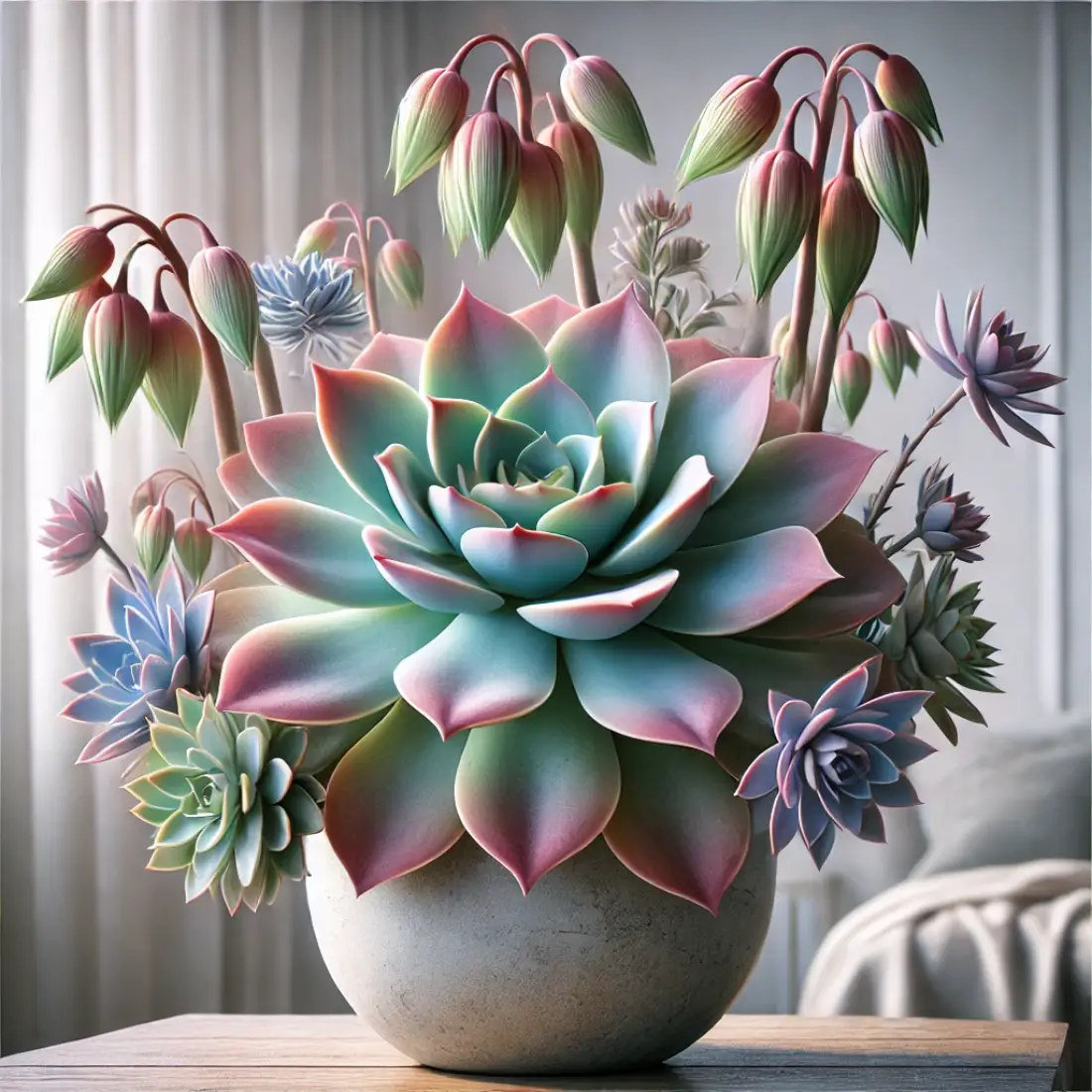
Caring for Fragrant Echeveria is straightforward, making it an excellent choice for beginners and experienced gardeners alike. These succulents thrive in bright, indirect light but can tolerate some direct sunlight. It’s essential to plant them in well-draining soil and avoid overwatering; the soil should be allowed to dry out completely between waterings to prevent root rot.
Echeverias benefit from occasional feeding with a balanced, diluted fertilizer during the growing season to encourage robust growth and flowering. They also require minimal maintenance, only needing dead leaves and spent flower stalks removed to keep them looking their best.
With their elegant rosettes and delicate scent, Fragrant Echeveria plants are perfect for adding a touch of natural beauty and fragrance to your home, whether displayed on windowsills, in terrariums, or as part of a succulent arrangement.
5. Night-Blooming Cereus
The Night-Blooming Cereus is an extraordinary cactus known for its spectacular nocturnal flowers and enchanting fragrance. Often referred to as the “Queen of the Night,” this cactus produces large, white, or cream-colored flowers that open only at night, filling the air with a sweet, intoxicating scent.
This cactus is typically found in tropical and subtropical regions, and it’s a member of the Cereus genus. The flowers, which can measure up to 12 inches in diameter, bloom infrequently, making each flowering event a highly anticipated occasion. The flowers usually open after dusk and close by dawn, lasting only a single night but leaving a lasting impression with their beauty and aroma.
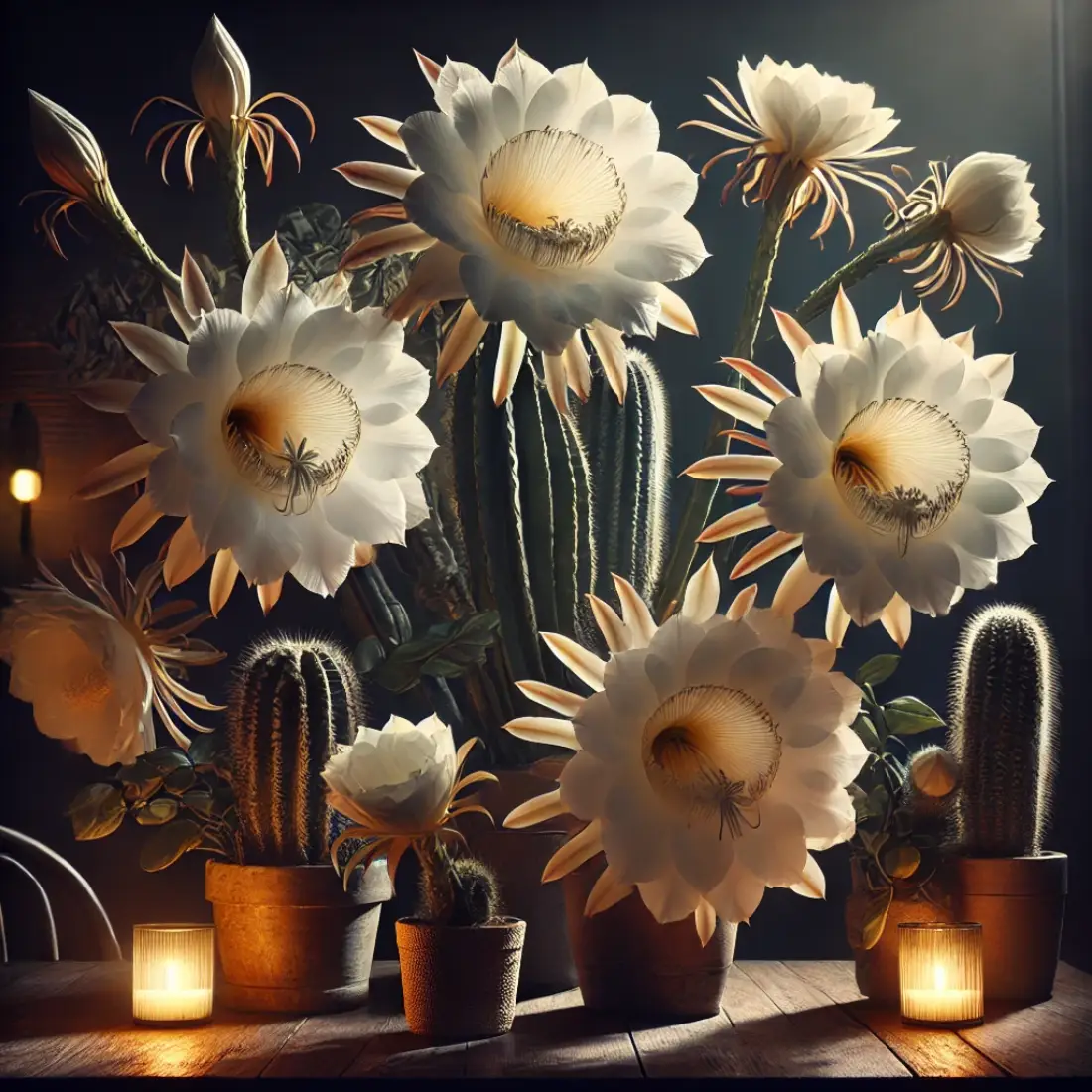
Caring for the Night-Blooming Cereus requires some attention to detail but is well worth the effort. This cactus thrives in bright, indirect light and should be placed near a south-facing window for optimal growth. It prefers well-draining soil and should be watered thoroughly but allowed to dry out between waterings. Overwatering can lead to root rot, so proper drainage is essential.
During the growing season, feeding the plant with a balanced, diluted fertilizer can promote healthy growth and flowering. The Night-Blooming Cereus also benefits from occasional pruning to remove dead or damaged stems and encourage new growth.
With its stunning, fragrant flowers and relatively easy care requirements, the Night-Blooming Cereus is a fantastic choice for anyone looking to add a touch of drama and natural perfume to their home. Its unique blooming pattern makes it a conversation piece and a treasured addition to any indoor garden.
6. Jasmine Cactus
The Jasmine Cactus, also known as Epiphyllum oxypetalum, is a stunning and fragrant cactus that captivates with its large, night-blooming flowers and sweet scent. Often referred to as the “Queen of the Night,” this cactus produces impressive white blooms that emit a jasmine-like fragrance, filling your home with a delightful aroma.
The Jasmine Cactus thrives in bright, indirect light and prefers a well-draining potting mix. It’s essential to water the plant moderately, allowing the soil to dry out between waterings to prevent root rot. This cactus also benefits from occasional feeding with a balanced, diluted fertilizer during the growing season.
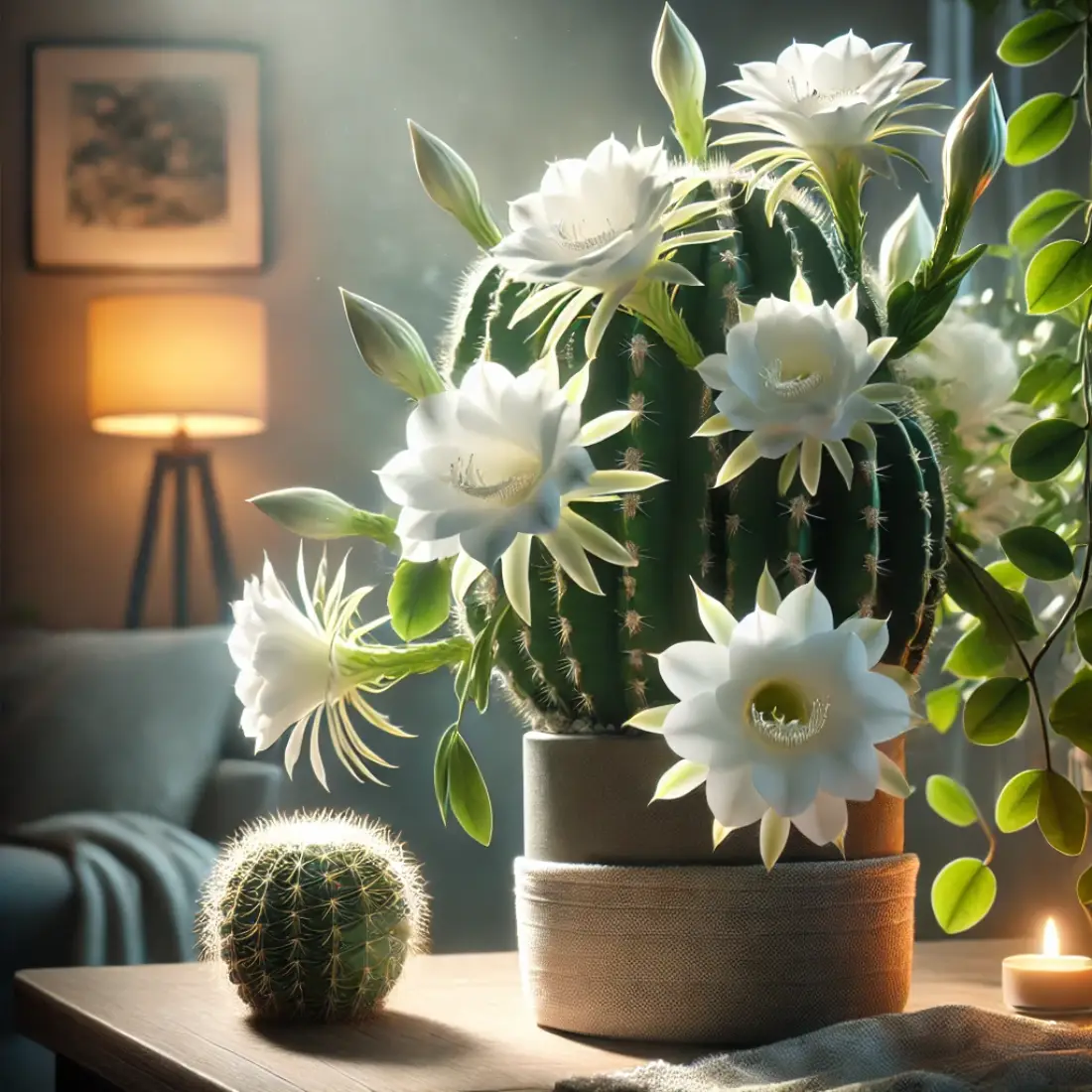
Ideal for hanging baskets or pots, the Jasmine Cactus can trail beautifully, adding both visual and aromatic appeal to any indoor space. With its captivating fragrance and easy care requirements, this cactus is a perfect choice for anyone looking to enhance their home’s ambiance naturally.
7. Elephant Bush (Portulacaria afra)
The Elephant Bush (Portulacaria afra) is a versatile and mildly fragrant succulent that brings both greenery and subtle aroma to your home. Often called “Spekboom,” this plant is known for its small, glossy, round leaves and its ability to thrive in various indoor environments.
Though not as strongly scented as some other succulents, the Elephant Bush emits a gentle, fresh aroma, especially when its leaves are rubbed or crushed. This plant is also celebrated for its environmental benefits, including its ability to absorb significant amounts of carbon dioxide, making it an excellent air purifier.

Caring for the Elephant Bush is straightforward. It thrives in bright, indirect light and well-draining soil. Water the plant sparingly, allowing the soil to dry out between waterings to avoid root rot. This succulent is also drought-tolerant, making it a low-maintenance option for busy individuals.
With its attractive foliage and easy care requirements, the Elephant Bush is a great addition to any indoor garden, offering both aesthetic and environmental benefits.
8. Sweet Scented Geranium (Pelargonium graveolens)
The Sweet Scented Geranium (Pelargonium graveolens) is a delightful plant known for its highly aromatic leaves and charming appearance. Often called “Rose-scented Geranium,” this plant emits a strong, pleasant fragrance that can fill your home with a refreshing, rose-like scent.
Sweet Scented Geranium features lobed, velvety leaves that release their fragrance when touched or brushed against. The plant also produces small, pink or lavender flowers, adding to its ornamental appeal. The leaves can be used to make essential oils, potpourri, or even as a flavoring in culinary applications, making this plant a versatile addition to your home.
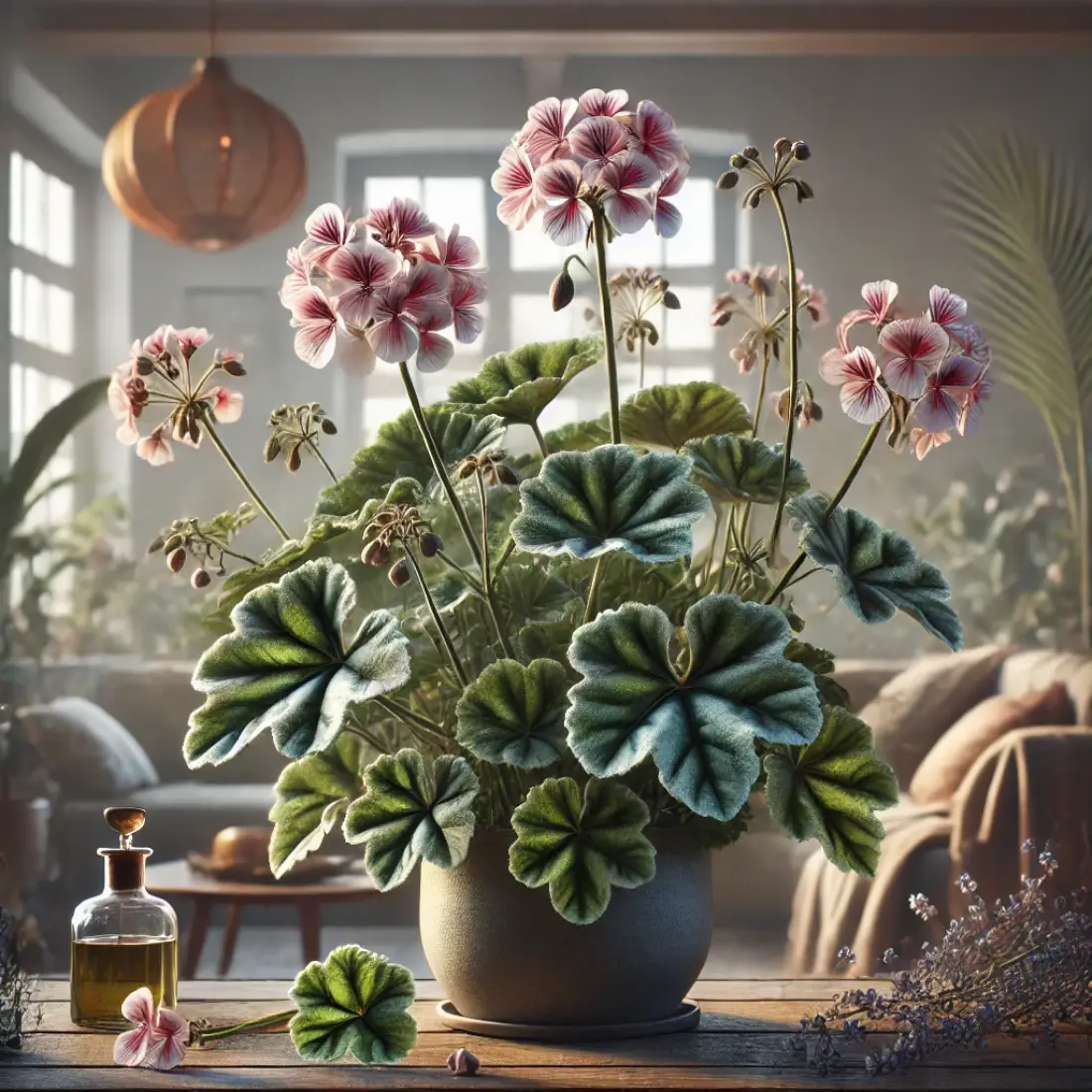
Caring for Sweet Scented Geranium is relatively easy. It thrives in bright, indirect light and prefers well-draining soil. Water the plant moderately, allowing the soil to dry out slightly between waterings to prevent root rot. This geranium benefits from regular pruning to maintain its shape and encourage new growth.
The plant is also known for its insect-repellent properties, making it a practical choice for indoor and outdoor spaces. During the growing season, feeding with a balanced, diluted fertilizer can promote lush growth and enhance its fragrance.
With its captivating scent, attractive foliage, and multiple uses, the Sweet Scented Geranium is a perfect choice for anyone looking to add a touch of natural fragrance and beauty to their home.
9. Scented-Leaf Begonias
Scented-Leaf Begonias are a charming group of plants prized for their aromatic leaves and ornamental beauty. Unlike most begonias, which are known for their flowers, these varieties are grown primarily for their delightful fragrances. The leaves of Scented-Leaf Begonias come in various shapes, sizes, and colors, often featuring intriguing patterns and textures.
The aroma of Scented-Leaf Begonias varies between species, ranging from spicy and citrusy to sweet and floral. These scents are most noticeable when the leaves are touched or gently crushed, releasing their natural oils into the air. Popular varieties include Begonia ‘Tea Rose’, with its rose-like fragrance, and Begonia ‘Cinnamon’, which emits a warm, spicy scent.
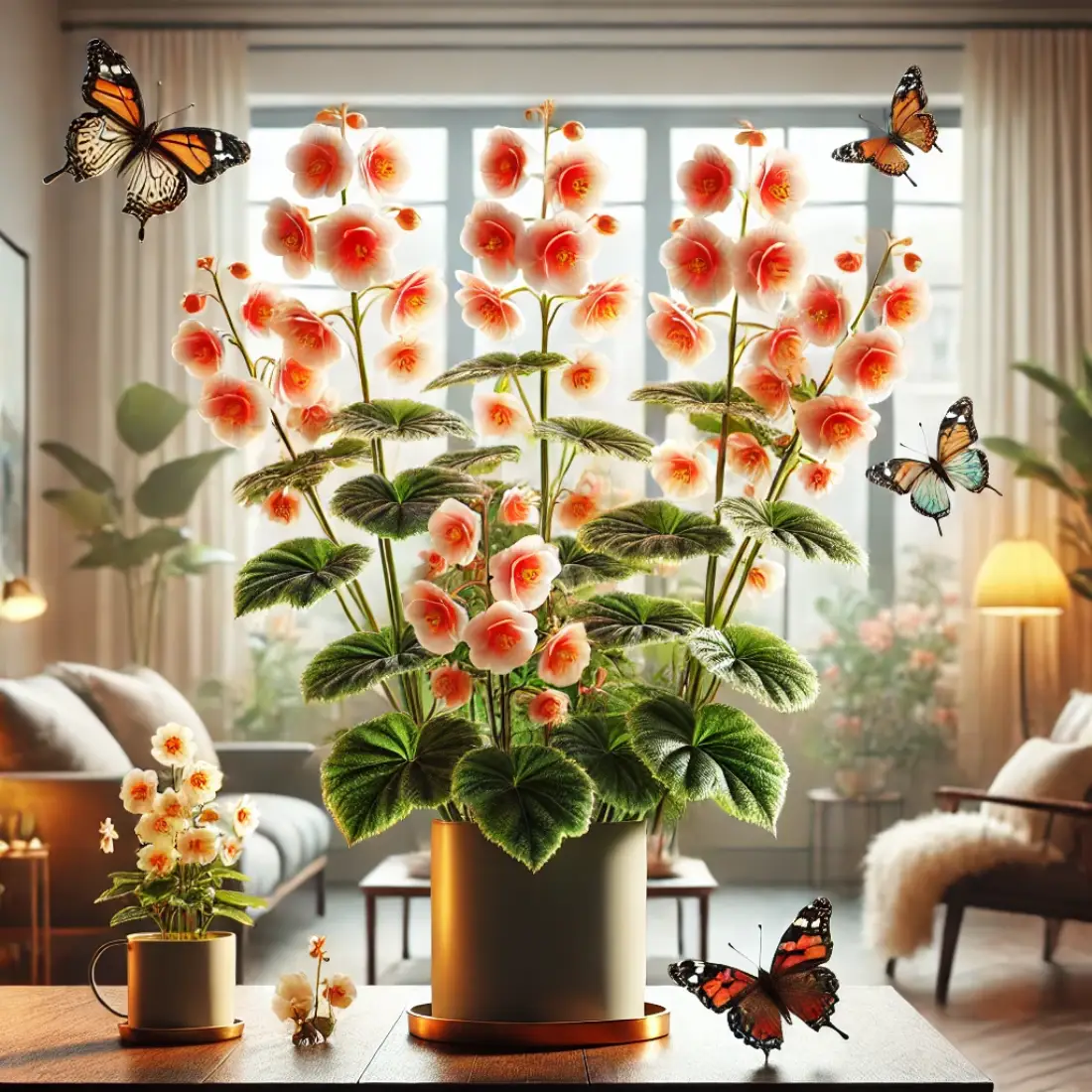
Caring for Scented-Leaf Begonias is relatively simple. They thrive in bright, indirect light and require well-draining soil to prevent waterlogging. Water the plants moderately, allowing the soil to dry out between waterings. Overwatering can lead to root rot, so it’s essential to ensure the soil is never soggy. These begonias also appreciate high humidity, making them perfect for bathrooms or kitchens.
To encourage healthy growth and maintain their fragrance, feed Scented-Leaf Begonias with a balanced, diluted fertilizer during the growing season. Regular pruning of dead leaves and flowers helps keep the plant tidy and promotes new growth.
With their appealing scents and attractive foliage, Scented-Leaf Begonias are an excellent choice for adding a touch of fragrance and visual interest to your home. They are perfect for window sills, tabletops, or as part of a mixed indoor garden.
10. Aloe Vera
Aloe Vera is a well-loved succulent known not only for its medicinal properties but also for its subtle, refreshing scent. This hardy plant features thick, fleshy leaves filled with a soothing gel, commonly used to treat burns, cuts, and various skin conditions. Beyond its healing qualities, Aloe Vera can emit a mild, fresh aroma, especially when its leaves are broken.
Caring for Aloe Vera is straightforward, making it a popular choice for both novice and experienced gardeners. This succulent thrives in bright, indirect light and prefers well-draining soil. Water Aloe Vera sparingly, allowing the soil to dry out completely between waterings to prevent root rot. Overwatering is a common mistake, so it’s crucial to ensure proper drainage.
With its combination of therapeutic benefits and easy care requirements, Aloe Vera is a fantastic addition to any home. Not only does it add a touch of greenery, but it also provides a natural remedy for minor skin issues and a hint of freshness to your indoor space.
FAQs About Fragrant Succulents and Cacti
How often should I water fragrant succulents and cacti?
Watering needs vary depending on the species, but most fragrant succulents and cacti prefer to be watered sparingly. Allow the soil to dry out completely between waterings to prevent root rot. Typically, watering once every 1-2 weeks is sufficient.
Can fragrant succulents and cacti survive in low light conditions?
While some fragrant succulents and cacti can tolerate low light, they generally thrive best in bright, indirect light. Insufficient light can lead to leggy growth and reduced flowering, which may affect their fragrance.
What are the best conditions for fragrant succulents and cacti to bloom?
These plants generally require bright, indirect light, well-draining soil, and minimal watering. Ensuring they receive adequate light and are not overwatered is key to promoting healthy growth and blooming, which enhances their fragrance.
Are fragrant succulents and cacti safe for pets?
Many succulents and cacti are safe for pets, but some can be toxic if ingested. It’s important to research each plant species and keep potentially harmful plants out of reach of pets.
How can I propagate fragrant succulents and cacti?
Most fragrant succulents and cacti can be propagated through stem or leaf cuttings. Allow cuttings to dry and callous over before planting them in well-draining soil. Water sparingly until new growth appears.
What are the common pests affecting fragrant succulents and cacti?
Common pests include mealybugs, spider mites, and aphids. Regularly inspect your plants and treat infestations with insecticidal soap or neem oil to keep them healthy and pest-free.
How do I enhance the fragrance of my succulents and cacti?
Ensuring your plants receive adequate light, proper watering, and appropriate feeding during the growing season can enhance their overall health and fragrance. Healthy, well-cared-for plants are more likely to produce fragrant flowers.
Can I grow fragrant succulents and cacti outdoors?
Yes, many fragrant succulents and cacti can be grown outdoors in suitable climates. They generally prefer warm, dry conditions and should be protected from frost and excessive rainfall.
What are the benefits of having fragrant succulents and cacti indoors?
Fragrant succulents and cacti not only beautify your home but also provide natural air freshening. They can improve air quality, boost mood, and add a touch of nature to indoor spaces.
Do all succulents and cacti have a strong scent?
Not all succulents and cacti are fragrant. While some varieties, like those listed in this article, have notable scents, others may not produce any noticeable fragrance. It’s essential to choose specific fragrant varieties if scent is a priority.

